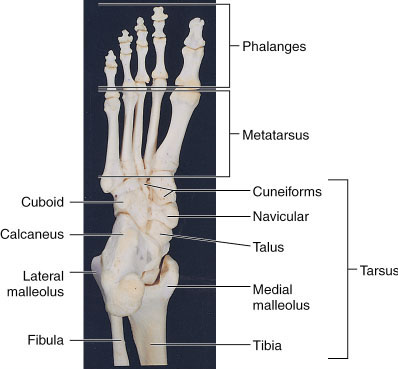* * *
* * *
1) the terminal part of the vertebrate leg upon which an individual stands
2) any of various units of length based on the length of the human foot esp a unit equal to 1/3 yard or 12 inches or 30.48 centimeters pl. foot used between a number and a noun <a 10-foot pole> pl. feet or foot used between a number and an adjective <6 feet tall>
* * *
n.
the terminal organ of the lower limb. From a surgical point of view, the human foot comprises the seven bones of the tarsus, the five metatarsal bones, and the phalangeal bones plus the surrounding tissues; anatomically, the bones and tissues of the ankle are excluded.
* * *
(foot) [A.S. fōt] 1. the distal portion of the lower limb, upon which an individual stands and walks. In humans it consists of the tarsus, metatarsus, and phalanges and the tissues encompassing them; other animals may use only part of the analogous structures for walking. Called also pes [TA]. 2. something resembling this structure. 3. a unit of linear measure, 12 inches, being the equivalent of 0.3048 meter. Abbreviated ft.
 Inferior view of right foot.
Inferior view of right foot.
Medical dictionary. 2011.